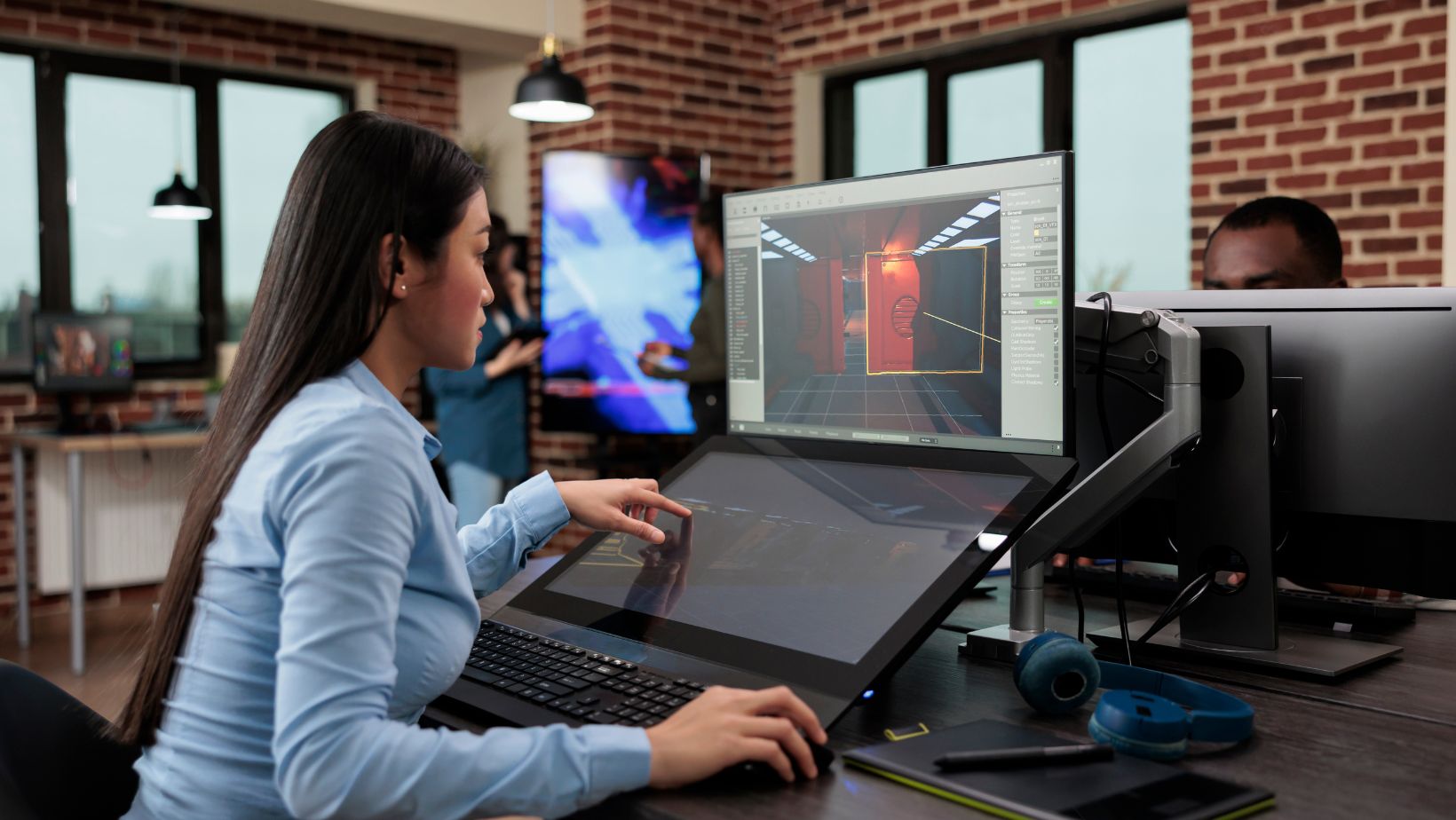The creation of a video game’s visual world requires seamless collaboration between a game developer company and concept art studios. This collaboration is the backbone of a game’s visual style, shaping everything from character designs to vast environments, even before any coding kicks off. Grasping the details of this connection is key to making games that truly connect with players.
The Key Players in the Creative Process
A successful artistic vision is built on the shoulders of skilled and technologically sound teams who work together in balance. Game development teams have several essential figures, such as designers who establish gameplay mechanics, producers who manage project timelines, and technical artists who bridge the gap between artistic vision and technical implementation.
Concept art studios bring their own essential expertise to the table. Their teams include concept artists who create initial visual representations, illustrators who refine and detail these concepts, and art directors who maintain consistency across the entire visual spectrum of the game. These professionals must understand both artistic principles and game development constraints to create effective designs.
The Development Process
The collaboration begins with comprehensive kick-off meetings where development teams outline their vision, including core themes, target audience, and gameplay mechanics. These initial discussions establish the foundation for all future artistic decisions and ensure alignment between both teams. During these meetings, teams also discuss technical limitations, platform requirements, and performance considerations that might affect artistic choices.
Mood boards serve as the next crucial step, compiling visual references that define the game’s aesthetic direction. These collections of art styles, color palettes, and thematic elements create a shared visual language between developers and artists. Mood boards often include references from various media, including films, comics, and other games, helping teams align on the desired artistic direction.
Design Refinement and Iteration
The design phase begins with rapid prototyping, where concept artists produce multiple sketches exploring different possibilities for characters, environments, and props. This exploration phase allows teams to consider various artistic directions without committing substantial resources to any single approach. Artists typically create numerous variations of each element, exploring different styles, proportions, and details.

Through structured feedback loops, developers review these initial concepts and provide input based on technical requirements and gameplay considerations. This iterative process ensures that artistic vision aligns with practical gameplay needs. Regular review sessions help identify potential issues early, such as designs that might be too complex for the target platform or elements that could create gameplay challenges.
Technical Implementation and Production
Once designs receive approval, the production phase begins. The production phase includes translating 2D concept art into functional 3D assets. Technical artists work alongside concept artists to confirm that the final 3D models follow the envisioned artistic vision while meeting technical specifications. This process requires careful attention to detail and constant communication between teams.
The art bible becomes an essential tool during this phase. This comprehensive document contains finalized artwork, color schemes, and detailed design guidelines, serving as the definitive reference for maintaining visual consistency throughout development. The art bible also includes technical specifications such as polygon count limits, texture resolution standards, and animation requirements.
Quality Assurance and Refinement
Quality control plays a vital role in the collaboration between developers and concept artists. Regular review sessions ensure that implemented assets match the approved concept art and maintain visual quality across different game environments and lighting conditions. This phase often reveals the need for adjustments to either the concept art or the technical implementation.
Project Management and Communication
Effective project management becomes crucial for maintaining productive collaboration between development teams and concept art studios. Clear communication channels, well-defined milestone schedules, and established feedback procedures help keep projects on track. Regular status meetings and progress reviews ensure that both teams remain aligned throughout the development process.
Impact on Game Development
Effective collaboration between developers and concept artists provides several key benefits:
- Creative Synergy: The combination of technical and artistic expertise leads to innovative solutions for both visual design and gameplay mechanics
- Development Efficiency: Early artistic alignment reduces costly revisions during later development stages
- Visual Coherence: Consistent art direction creates immersive game worlds that resonate with players
- Marketing Potential: Strong concept art serves as powerful promotional material during game marketing campaigns
Industry Success Stories
Major studios demonstrate the value of strong developer-artist partnerships. Overwatch by Blizzard Entertainment is one of the successful titles that stems from the intrinsic fusion between artistic design and gameplay mechanics. Their approach ensures that visual elements serve both aesthetic and functional purposes.

Another example of collaboration between developers and concept artists is Naughty Dog’s famous work The Last of Us. This game displays early collaboration between developers and concept artists and creates emotionally resonant environments that improve and enrich storytelling. Their environments are not just mere backdrops, but they actively contribute to the narrative experience through careful attention to detail and atmospheric design.
Challenges and Solutions
Despite its importance, this collaboration faces various challenges. Different time zones, communication barriers, and technical constraints can complicate the partnership between developers and concept artists. Successful studios address these challenges through clear documentation, regular video conferences, and robust project management tools.
The Future of Game Art Collaboration
As gaming technology advances, the relationship between game developers and concept art studios grows increasingly crucial. This partnership continues to evolve, pushing the boundaries of visual storytelling and interactive entertainment. With emerging technologies such as real-time rendering and virtual reality, new opportunities and challenges arise for artistic collaboration.
The combination of technical skills and creative vision is key to building engaging virtual worlds that spark players’ imaginations and provide unforgettable gaming experiences. As the industry grows, this collaboration will become even more crucial in defining the future of interactive entertainment, with standout games being those that effortlessly merge artistic brilliance with cutting-edge technology.